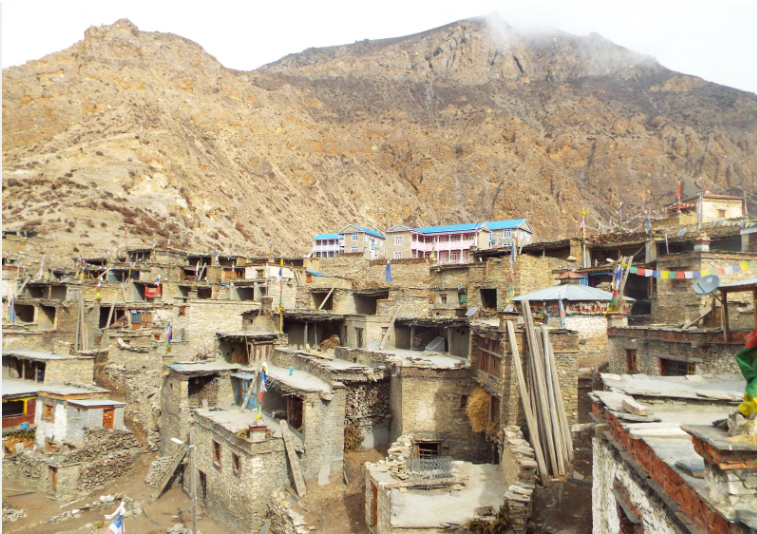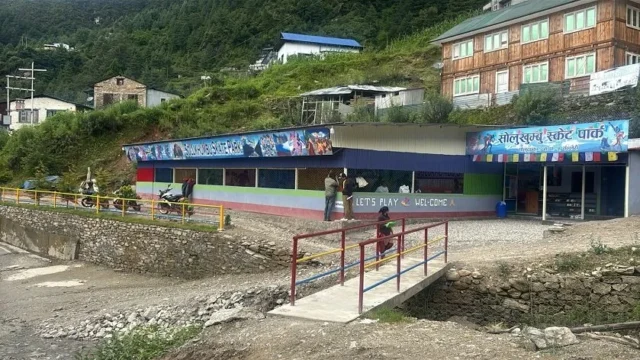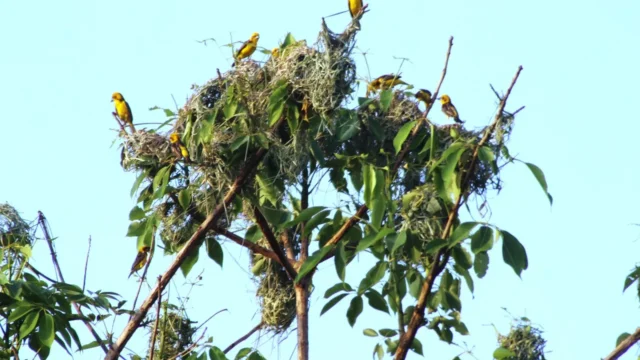Eighty-one-year-old Yangdung Gurung from Pisang, Manang, recalls, “In the past, homes were built using fir logs with a layer of mud spread on top. These fir logs were uniformly covered. Now, it’s becoming hard to even see them.” He notes that the tradition of using fir wood from the forest to build houses is fading.
Gurung explains that houses made from modern materials like corrugated metal often suffer from issues such as water leakage and poor insulation, especially in winter. “Old homes made from mud and fir wood were warm and secure. The landscape here is changing, and the traditional architecture is disappearing,” he says. Previously, homes built with mud and wood are now being replaced by concrete structures.
Manang, which once rarely experienced rainfall, is now seeing an increase in precipitation. Gurung adds, “Earlier, we only knew of rain in lower Manang. Now, even upper Manang experiences rain. With the increase in rainfall, old houses are deteriorating.”
Until about five years ago, Manang’s traditional homes were mostly built with mud and wood. However, these old houses are now being replaced by newer structures. Locals used yak horns to reinforce the roofs of these traditional homes. “The protection of old houses is essential, but with climate change bringing more rain, these traditional structures are becoming unviable,” says Vinod Gurung, President of the Manang Tourism Association. He reports that last year’s rains caused the collapse of mud and wood houses, leading to human casualties.
Traditional homes in Manang were once built close together in clusters. Now, concrete buildings with metal roofs are becoming common. Rinjien Darje Gurung, former Chairperson of Dizyang Village Municipality-9, mentions, “These clustered homes were popular with tourists and were considered attractive. However, changing weather patterns are altering the landscape. We are at risk of losing Manang’s traditional identity.”
With the inadequacy of traditional mud and wood homes to handle the changing climate, villagers are now constructing houses with corrugated sheets and cement. Local residents find themselves compelled to install heaters due to the inadequacies of traditional buildings. Munindra Jung Gurung, a member of the Gandaki Provincial Assembly, emphasizes the need to integrate traditional architectural preservation with modern building practices in tourist areas.
In Nar Phu Rural Municipality, where motor roads are not yet accessible, the use of corrugated metal has become more prevalent. Chairperson Kunjyo Tenzing Lama explains, “In the past, snow would accumulate on the roofs of mud and wood houses, which was manageable. With increasing rainfall, we have shifted to using corrugated sheets and cement.”
Despite the decline in traditional construction methods in places like Nar and other villages, some areas like Phu still retain their old houses. However, the increase in rainfall is raising the risk of damage. Former Chairperson of Naso Village Municipality-8, Hupjung Gurung, states, “For safe living, we are forced to use modern materials like cement. The use of wood and mud is decreasing, but there is a call to maintain the traditional appearance for tourism purposes.”
Overall, climate change is contributing to increased rainfall and extreme weather events in Manang, leading to significant changes in traditional housing and local architecture. Efforts are needed to balance modern construction with the preservation of Manang’s unique heritage.





